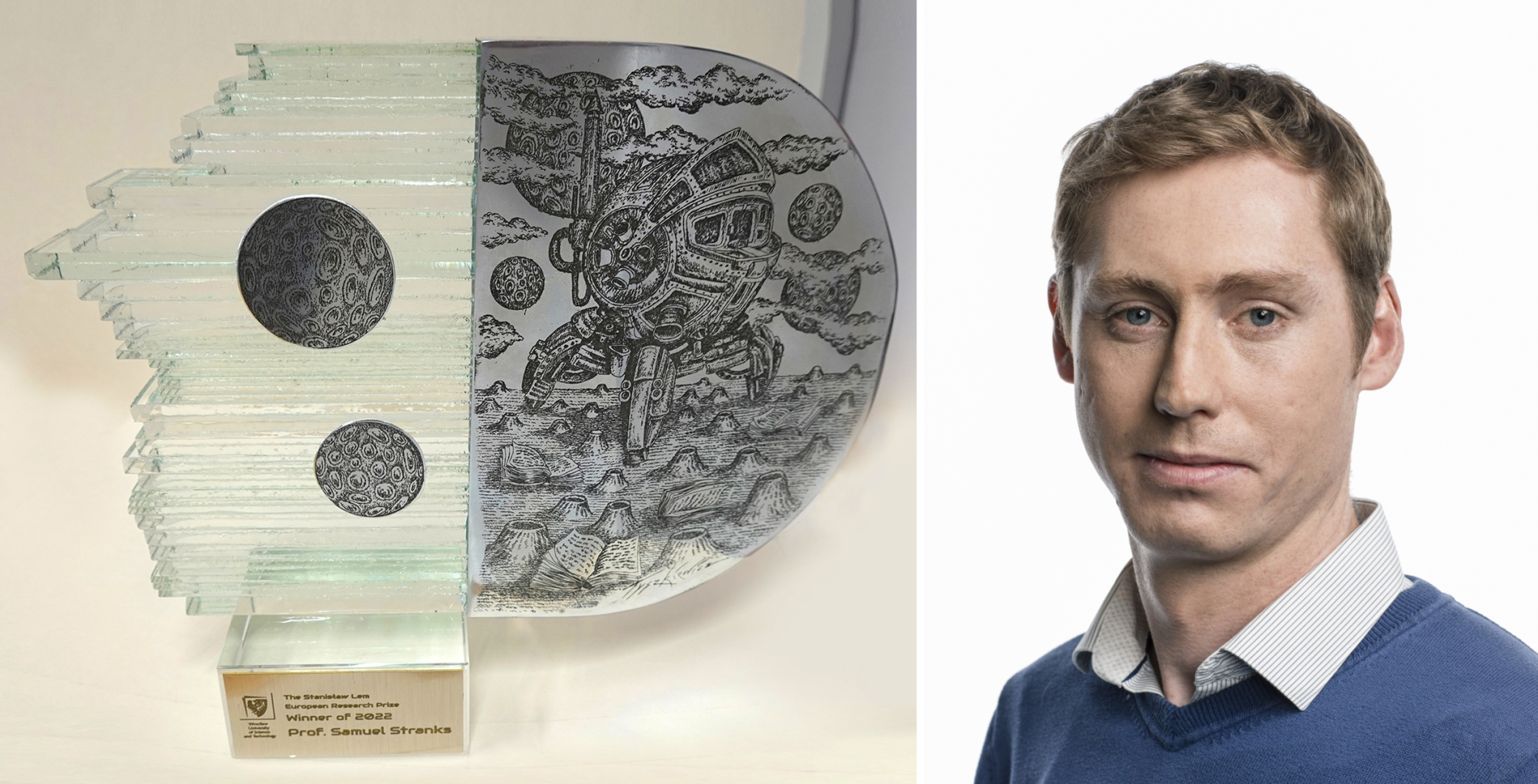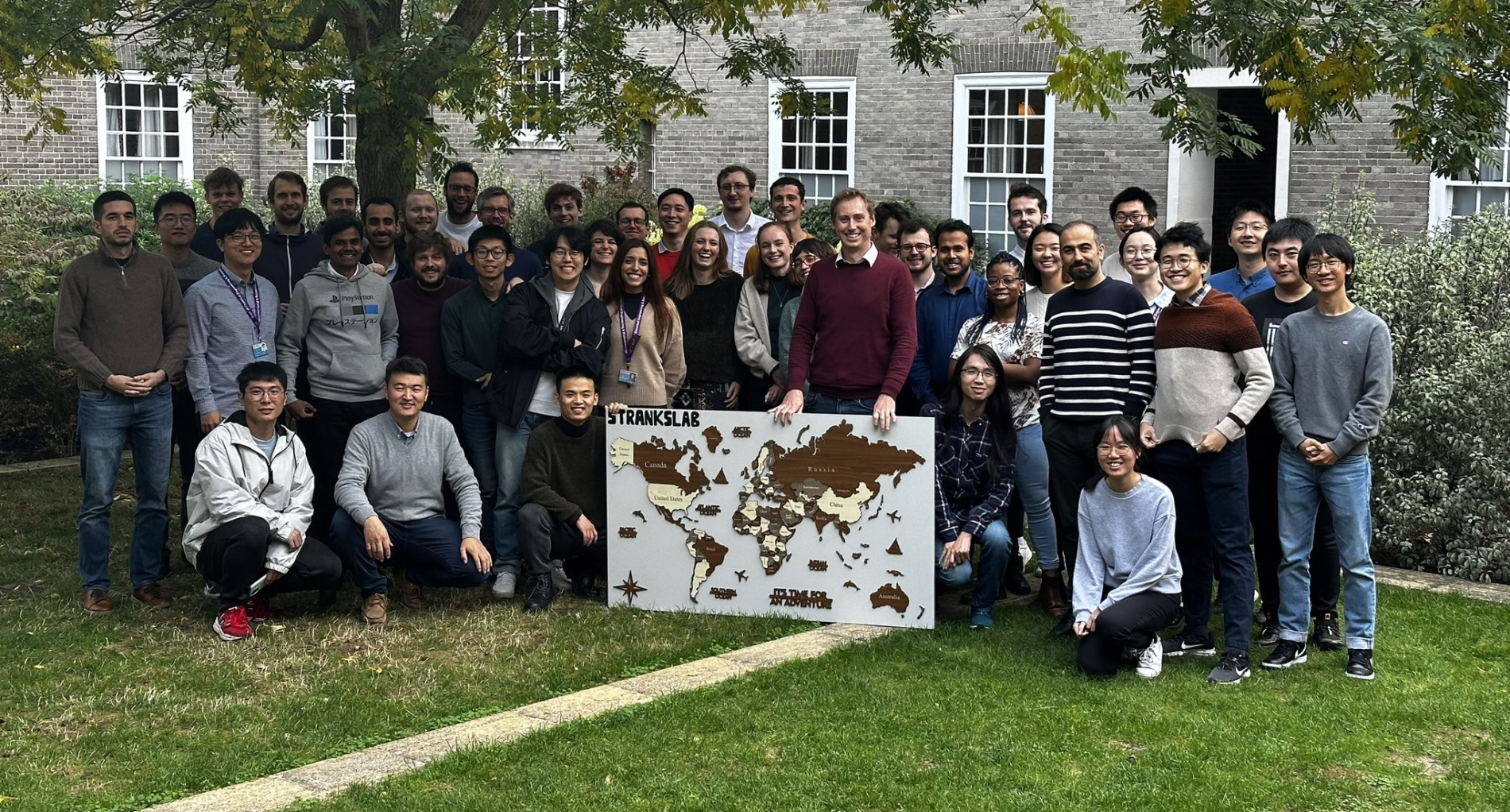YOUR BROWSER IS OUT-OF-DATE.
We have detected that you are using an outdated browser. Our service may not work properly for you. We recommend upgrading or switching to another browser.
Date: 05.06.2023 Category: general news

What is so exciting about perovskites? Will they bring a breakthrough in photovoltaics and why their commercialisation will not be easy. An interview with the winner of the Lem Prize 2022, Professor Samuel Stranks from the University of Cambridge.
Prof. Samuel Stranks: Together with my team, I’m working on new materials for the next generation of affordable electronic devices that will drive the energy transition. Our interests include the development of solar cells that generate green energy, fuels, as well as high-performance lighting technologies. We’re also concerned with X-ray detectors for medical imaging.
These materials are very exciting because they are extremely efficient at low manufacturing costs. We haven’t come across such a combination in semiconductors before. We usually dealt with materials characterised by high performance but generating high manufacturing costs, or vice versa.

With halide perovskites, we can make exciting headway in photovoltaics, with efficiencies to match market-leading silicon cells and entirely new tandem solar cell arrays. Perovskite technology has a good chance of becoming a breakthrough, but – given the well-established photovoltaic market – it will be many years before it can be commercialised.
We’re still at an early stage, but we’re already seeing amazing advances in their application in panel lighting and next-generation displays, as well as in high-sensitivity and high-resolution X-ray detectors used for medical imaging.
We know that there’s a strong demand for better and better performance, which these new materials will provide. They will bring down the cost of photovoltaic solutions, which will be instrumental in driving the global energy transition.
From a scientific point of view, it’s definitely my contribution to understanding the fundamental phenomena responsible for the recombination process of electric charge carriers in halide perovskites and how it depends on structural and chemical properties. Another thing I'm immensely proud of is bringing together a great, team-oriented research group around me, supporting its members in their continued development, and seeing the amazing progress they are making.
I devote a vast majority of my free time to my two children: Will (9) and Ella (5), and my wife Amanda. Especially at weekends when I act as the family’s taxi driver. But of course, I love to play with them and cheer them on during sports training. I used to play a lot of Australian football myself, even reaching the semi-professional level at one point.

Personally, I enjoy hiking, running, spending time outdoors, travelling, and enjoying good food and wine. Fortunately, all of these things are very compatible with academic work, so although lack of time doesn't allow me to take longer breaks, I still manage to do them all from time to time.
I frankly admit that I haven’t read any of Lem's books, although I obviously know him and how much influence his works have had on the modern world. As a Lem Prize winner, I'm looking forward to delving into his books.
Have you been to Poland before or worked with Polish scientists? This is my first stay in Poland and I’m very excited about it. Of course, I collaborate with Polish scientists, also those from Wrocław. I have been working closely for a long time with Prof. Paulina Płochocka-Maude from Wrocław Tech’s Faculty of Fundamental Problems of Technology.
I also have several postdocs in my group, who conduct very high-quality research. Let me mention here Krzysztof Gałkowski, PhD from Wroclaw Tech’s Faculty of Fundamental Problems of Technology or Dominic Kubicki, PhD from the University of Birmingham.
Benefactors of the Lem Prize 2022 are:
Bergman Engineering, TestArmy Group, Santander Universidades, PGE Górnictwo i Energetyka Konwencjonalna S.A., PCC Rokita and Fundacja PKO Banku Polskiego.
Our site uses cookies. By continuing to browse the site you agree to our use of cookies in accordance with current browser settings. You can change at any time.